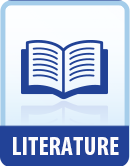|
This section contains 513 words (approx. 2 pages at 400 words per page) |

|
Development of the Novel
Beginning in the early eighteenth century, long narratives began to be written in prose. The modern novel developed in England with Daniel Defoe's Robinson Crusoe (1719) and Moll Flanders (1722). These works were followed shortly by Samuel Richardson's Pamela (1740) and Henry Fielding's The History of Tom Jones, a Foundling (1747). These novels were highly episodic plot-driven stories. In Germany in 1766-1767, Wieland wrote The History of Agathon, the first example of a Bildungsroman. Then in 1795, Goethe produced Wilhelm Meister's Apprenticeship. The term Bildungsroman was coined in 1817 by Karl von Morgenstern but not commonly applied until about 1870. The genre flourished through the middle decades of the nineteenth century, both in England and the United States. The historical novel, developed by Sir Walter Scott, was written also by Dickens and others. The popularity of the Bildungsroman genre waned in the early twentieth century, but variations of the form continued...
|
This section contains 513 words (approx. 2 pages at 400 words per page) |

|




